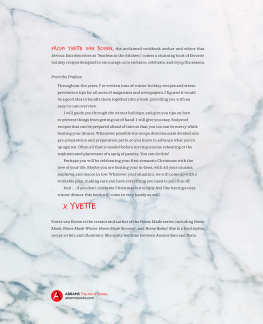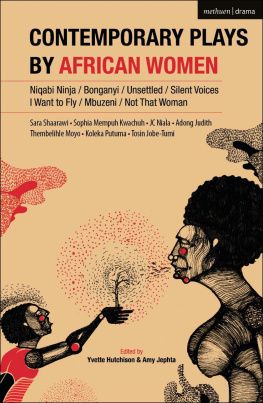FITTING INTO PLACE?
Yvette Taylors extraordinary book brings out into the open the structural violence of social class in Britain. It is much more than just a trenchant analysis. Through her profound attentiveness to the lives of working class women in the north east we access a deep sense of how the complexities of de-industrialisation furnish the cultural landscapes of class and gender. The result is an expansive and textured account of working class life beyond anything that Orwell and Hoggart could have achieved. This is a book that needs to be read urgently by politicians and policy makers but also by theorists of urban life who rarely get close to the experiences documented in this book and what it means to live with the structure forces that fit people in to place.
Les Back, Goldsmiths, University of London, UK
To my Granny and Granda, Agnes McKelvie
and Thomas McKelvie (both 19242009),
much missed
Fitting into Place?
Class and Gender Geographies and Temporalities
YVETTE TAYLOR
London South Bank University, UK
First published 2012 by Ashgate Publishing
Published 2016 by Routledge
2 Park Square, Milton Park, Abingdon, Oxon OX14 4RN
711 Third Avenue, New York, NY 10017, USA
Routledge is an imprint of the Taylor & Francis Group, an informa business
Copyright Yvette Taylor 2012
Yvette Taylor has asserted her right under the Copyright, Designs and Patents Act, 1988, to be identified as the author of this work.
All rights reserved. No part of this book may be reprinted or reproduced or utilised in any form or by any electronic, mechanical, or other means, now known or hereafter invented, including photocopying and recording, or in any information storage or retrieval system, without permission in writing from the publishers.
Notice:
Product or corporate names may be trademarks or registered trademarks, and are used only for identification and explanation without intent to infringe.
British Library Cataloguing in Publication Data
Taylor, Yvette, 1978-
Fitting into place? : class and gender geographies and temporalities.
1. Social ecology. 2. Belonging (Social psychology) 3. Group identity 4. Residential mobility. 5. Residential mobility--Sex differences. 6. Residential mobility--Social aspects. 7. Social mobility. 8. Social mobility--Sex differences.
I. Title
304.2-dc23
Library of Congress Cataloging-in-Publication Data
Taylor, Yvette, 1978
Fitting into place? : class and gender geographies and temporalities / by Yvette Taylor.
p. cm.
Includes bibliographical references and index.
ISBN 978-0-7546-7922-6 (hbk)
1. Social classes. 2. Social stratification. 3. Sex discrimination. 4. Group identity. 5. Human geography. I. Title.
HT609.T39 2011
305.5--dc23
2011035961
ISBN 978-0-7546-7922-6 (hbk)
Contents
Acknowledgements
There are many people to thank here. The research project was funded by the ESRC (RES-000-22-2150) From the Coal Face to the Car Park? Intersections of Class and Gender in the North East (20072009) and I thank them for their contribution. Michelle Addison was employed as a Research Assistant on the project for 12 months her insight, enthusiasm, skill and friendship extend well beyond this time. Thanks to the women who participated in the research and the user group of invested North East actors: I hope to have done justice to the unequal voices at play in such forums (as interviewees, researchers, users) and to have stressed the importance of evaluating these.
Fieldwork and preliminary analysis was completed in the UK and written up during my Fulbright research fellowship to Rutgers University, New Jersey. I am very grateful to the Fulbright Commission for enabling this visit and the writing-up of this project. Special thanks to Monique Aronsohn and Michael Scott-Kline.
Many thanks to Michelle Addison, Janice McLaughlin and Judy Richards at Newcastle University. And to Margaret Breen, Davina Cooper, Jacqui Gabb, Carolyn Pedwell and Barbara Pini, all of whom read and very much improved chapter drafts.
Thanks to Jen Gieseking, Katerina Liskova and Elizabeth Matthews for US orientation. While in the US I participated in the One to World Global Classroom and Id like to thank the pupils at Newcomers High School, Queens and P.S. 308 Clara Cardwell, Brooklyn. At Rutgers, I would like to thank Mary Hawkesworth for facilitating my Fulbright stay and Joanna Regulska. I am glad to have met Gabriella Carolini, Diane Elson, Susana Galn, Sara Perryman, Samantha Swerdloff and Abe Weil, and to have participated in the generous, sustaining Happiness Seminar group at the Institute for Research on Women, organised by Yolanda Martinez-San-Miguel and Sarah Tobias: thanks to all Lincoln Addison, Claudia Brazzale, Samantha Costanzo, Valeria Garrote, Neha Gondal, Jeannette Haviland-Jones, Briavel Holcomb, Laura Lovin, Damaris Otero-Torres, Ben Sifuentes-Jauregui, Kristen Springer, Alex Warner and Karen Zurlo. Thanks to James Dean for co-organising a Panel Session at the Pacific Sociological Association, Seattle, inviting me to Sonoma State University and for being such a great tour guide in San Francisco, much appreciated! Thanks also to Jacqueline Kennelly at Carleton University for a similar range of invites and tours! Thanks to Alice, Sinead and Malaise.
Chapter 1
Fitting into Place? Class and Gender Geographies and Temporalities
Meanings, Experiences and Opportunities of Fitting into Place
The contested nature of social transformation as fractured, uneven in pace and ongoing, undermines any attempt to easily or finally convey what was against what is, to make people and places fit in changing versions of then and now, of past, present and future. Both tradition and modernity are revised through conserved pasts and projected futures, felt publically and privately. To fit in may be thought of as a binding straightjacket, a restriction in getting out and ahead, or it may shore up a sense of comfortable ease and belonging. The fit may signal a claim to change and advancement, as against being stuck in the past, out of date and out of step. The when as modern and future orientated or traditional and backward also implies a where, in terms of the places created and inhabited in changing times. Futures are created and extended across local, regional, national and international spaces, connecting social pasts with current times and linking individual and social presences (and absences) affectively and materially: Illouz (2007), for example, has discussed the making of emotional capitalism as necessitating a fast becoming, an opening up of new frontiers for returns, which fosters a culture of inadequacy, achievement and anxiety. Different feelings, of (not) keeping up or contributing, can be located spatially within national values (Ahmed 2000), as the worth of citizens are continually assessed rather than newly occurring in times of economic and ecological crisis (Tolia-Kelly 2010).
Imagining ourselves to be in, or to have a place, often involves complex feelings of loss and gain, entrenching a sense of belonging or rupturing this through disconnecting claims, entitlements and longings. These economies of feeling work across different contexts and are present in everyday geographies as well as in macro social structures that (re)produce classed and gendered subjects and spaces (Skeggs 1997, Nayak and Kehily, 2008, Fortier 2008, Taylor 2007, 2009, Evans 2010). Not everyone can fit in, or flexibly cast themselves through trajectories of future potential, as the city and citizenry are also recast through regeneration and rebranding and not everyone wants to fit in to such spaces. Alongside commodified multi-culturalism celebrated in ideas of regenerative mixed space inhabited by mixed acquisitive subjects sits the temporal, inter-generational passage of risk residing in specific landscapes of disadvantage and degeneration (Thrift 2004, Bristow 2010). Notions of accretion and capacity contrast with erosion and culpability and are manifest in uneven effects across space where only











